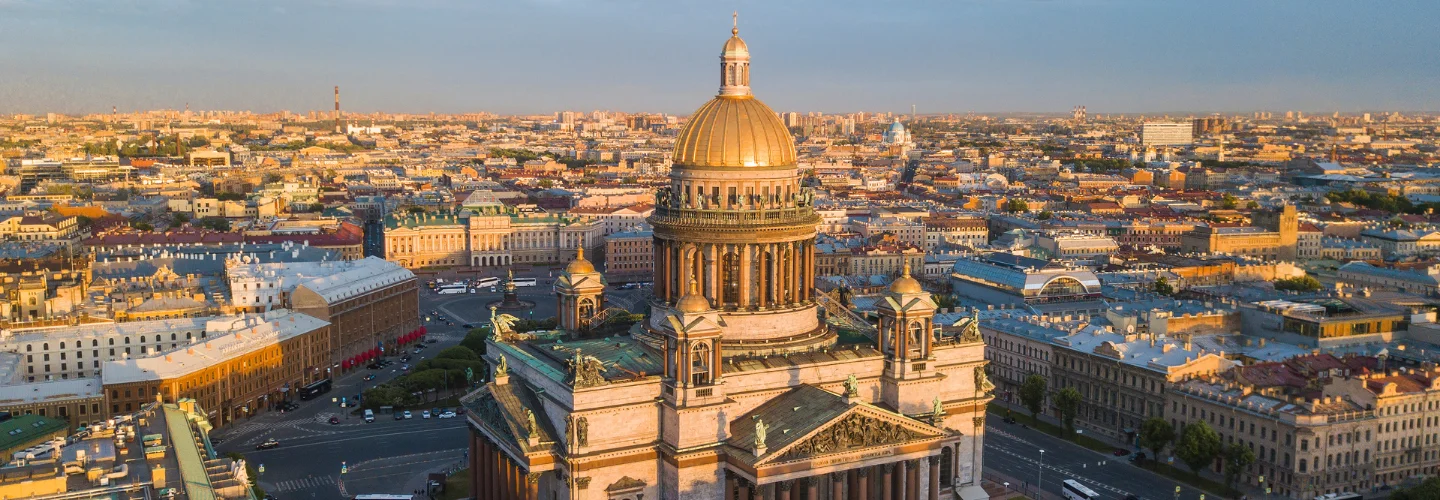Saint Petersburg actually has so much to offer, it’s often impossible to see it all in one day. Compared to Moscow, St. Petersburg feels more European—fine art and exquisite design details mixing in with history around every corner. You can explore it on foot to admire the architecture up close and personal, or hop on a cruise to explore part of the 300 kilometers of canals that cut through the imperial city For a stunning overdose of white and gold colors, visit Moika Palace (most famous for being the place where Rasputin was killed) and the Neoclassical, 19th-century St. Isaac’s Cathedral, which is actually a Russian Orthodox museum. The Hermitage Museum, perhaps St. Petersburg’s most famous tourist attraction and the second largest art and culture museum in the world, has a collection of over three million items that cover everything from prehistoric art (including articles from the nomadic tribes in Altai) to Catherine the Great’s art collection.
St. Petersburg is a Russian port city on the Baltic Sea. It was the imperial capital for 2 centuries, having been founded in 1703 by Peter the Great, subject of the city’s iconic “Bronze Horseman” statue. It remains Russia’s cultural center, with venues such as the Mariinsky Theatre hosting opera and ballet, and the State Russian Museum showcasing Russian art, from Orthodox icon paintings to Kandinsky works.
St. Petersburg is the second-largest city in Russia and known as the cultural capital of Russia. Aside from some pretty impressive cathedrals and palaces, Saint Petersburg is home to the Hermitage, one of the largest art museums in the world and the Lakhta Center, the tallest skyscraper in Europe.


Comment (0)